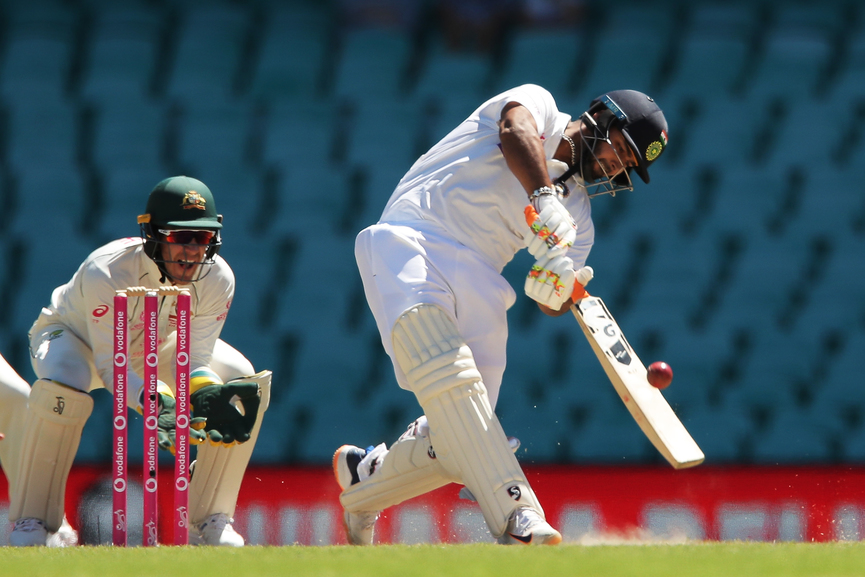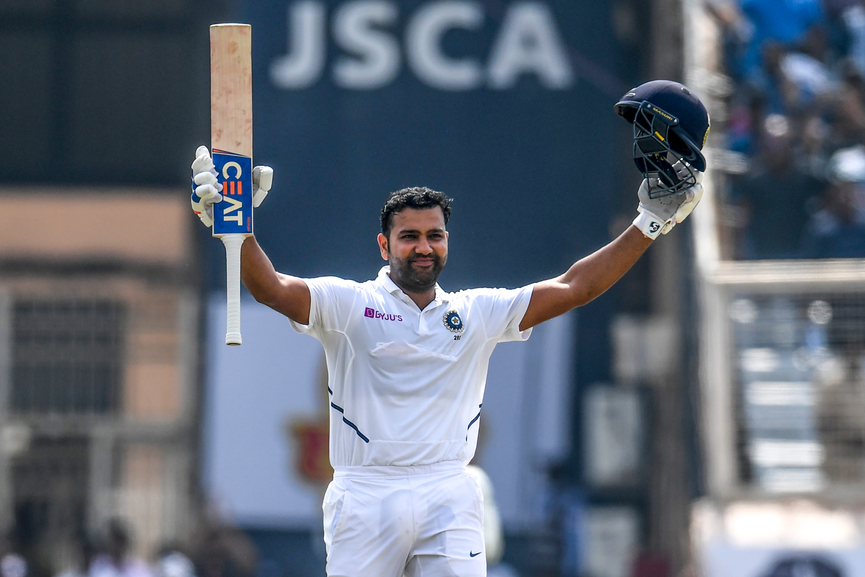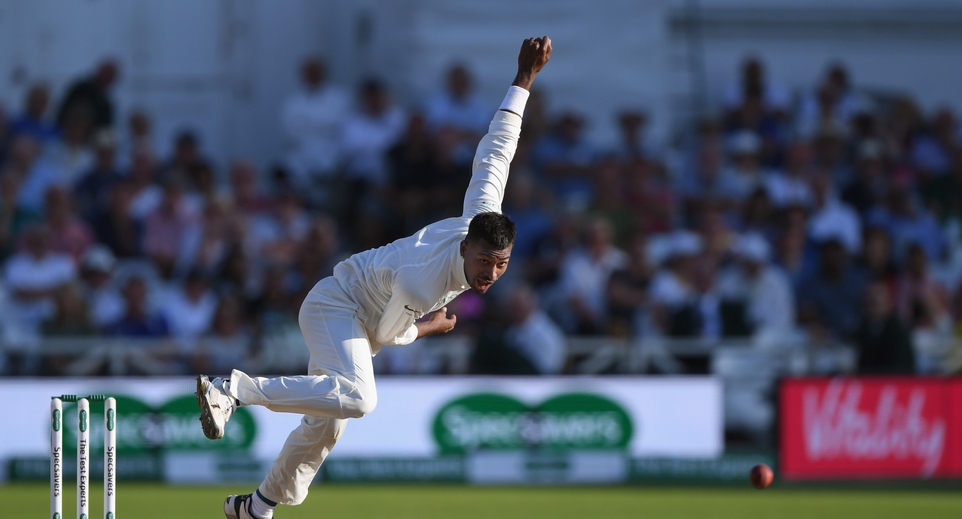 OPINION
OPINIONAfter an eventful two years of intense competition, it was New Zealand who emerged victorious in the World Test Championship (WTC) final against India. The Virat Kohli-led side fell short at the final hurdle but put in a commendable performance over the course of the last two years. India found new superstars at every step and of course, some of the senior pros stepped up when it was most needed. But alas, India were outplayed in the final by New Zealand – the only team to have dominated them in the entire cycle.
India’s journey in the recently-concluded WTC cycle, their approach, their strategy and the teams they played gives us a clear indication of where they stand, ahead of the next cycle which begins in August against England.
From Saha to Pant
India’s journey in the WTC began back in August 2019, when the concept was new and nobody had a clue how it was going to pan out. More so for Rishabh Pant, who started the 2019-21 WTC more as a back-up for Wriddhiman Saha, but at the end of it, he has not just replaced the Bengal ‘keeper, but also has cemented his place in the side as a superstar batsman whom the world fears. When it came to batting, Pant’s talent was never in question. He already had hundreds in England and Australia before the start of the WTC, but it was his ‘keeping that was under constant scrutiny.
While Pant did not make the best use of his chances in the Caribbean and in New Zealand, he would edge Saha out after India’s debacle in Adelaide and from then on there was no looking back for Pant.
 Till the New Zealand tour in 2020, Pant in seven innings had managed just 118 runs at 16.85 and never reached 30 even once. However, since that tour, Pant has grown in confidence and slammed 589 runs at 53.54, which included match-winning knocks in Brisbane (89*), Chennai (101), and a counter-attacking 97 in a drawn Test in Sydney.
Till the New Zealand tour in 2020, Pant in seven innings had managed just 118 runs at 16.85 and never reached 30 even once. However, since that tour, Pant has grown in confidence and slammed 589 runs at 53.54, which included match-winning knocks in Brisbane (89*), Chennai (101), and a counter-attacking 97 in a drawn Test in Sydney.
Head coach Ravi Shastri boils it down to Pant working extremely hard on his fitness, which has not just helped him with the bat, but also behind the wickets.
“He was told in no uncertain terms that he has got to respect the game a little more. He's got to lose a bit of weight and work hard on his keeping. We know the talent he has and he has responded," Shastri said in March earlier this year.
"He has worked like hell for the last few months and the results are here to see. Yesterday's innings was the best counter-attacking innings I have seen in India. It was a two-phase innings. He built a partnership with Rohit playing against his nature - to do that is not easy - and to turn it on after 50. Keeping has been magnificent and Washi was outstanding too."
Fast bowling machine
For years, Pakistan has been termed as a team that spots raw fast bowling talent and if there is potential, their career is fast-tracked to the international level. From Waqar Younis to Naseem Shah, Pakistan has produced a lot of talented bowlers. But this time around, India have shown they too are not far behind when it comes to having depth in the fast bowling department.
That showed in perhaps the toughest places for a subcontinent side to visit – Australia. Having been annihilated in Adelaide, India started to lose their fast bowlers one by one and by the time we reached the final Test at The Gabba, none of the first-choice bowlers were available.
In what started out as an attack featuring Umesh Yadav, Jasprit Bumrah in Adelaide, ended up with Mohammed Siraj, T Natarajan, Shardul Thakur, and Navdeep Saini by the time the tour was done and dusted in Brisbane. In fact, Siraj finished as India’s leading wicket-taker on the tour with 12 scalps. Not to forget, the senior-most pacer Ishant Sharma did not even bowl a single delivery as he was recovering from an injury.
If workload management ever becomes a thing in Indian cricket, it is certainly comforting to see plenty of talented players put their hands up.
Depth in spin
When India went in with a lone spinner, especially outside the subcontinent, Ravichandran Ashwin would play that role. However, on the West Indies tour in 2019, India decided to give Ravindra Jadeja the first preference. Head coach Ravi Shastri explained that the reason behind the decision was Jadeja's fielding and batting ability.
Jadeja justified his coach’s trust in him by scoring 500 runs at 50 and with the ball, he picked up 29 wickets from 11 Tests at 29.24 in the WTC. However, during the course of this cycle, India found few more capable spinners in Shahbaz Nadeem, Axar Patel, and also Washington Sundar, who could be used in the future more regularly to relieve some workload from Ashwin or Jadeja. India also have Kuldeep Yadav on the fringes. Stepping away from the usual finger spin, in Kuldeep, India have a wrist spinner, which gives them a bit of variation.
Openers galore
With Rohit Sharma being promoted to open in Tests, one cannot help but draw comparisons to 2013 when he was asked to open ahead of the Champions Trophy. Eight years down the line, he is among the most successful ODI openers. Often jostling for a place in the middle-order, Rohit has well and truly found his feet as an opener in whites too, just as he did in ODIs.
 In the WTC, Rohit is the only opener to have breached the 1,000-run barrier and has done so at a healthy average of 64.38. Shubman Gill has made an impressive start to his career and seems to have settled in as Rohit’s opening partner. If you look beyond them, India still have the likes of Prithvi Shaw, Mayank Agarwal and if needed, KL Rahul too could be tried. Even Hanuma Vihari is a potential option!
In the WTC, Rohit is the only opener to have breached the 1,000-run barrier and has done so at a healthy average of 64.38. Shubman Gill has made an impressive start to his career and seems to have settled in as Rohit’s opening partner. If you look beyond them, India still have the likes of Prithvi Shaw, Mayank Agarwal and if needed, KL Rahul too could be tried. Even Hanuma Vihari is a potential option!
Pujara’s form a worry?
Since that majestic 193 against Australia in 2019, Cheteshwar Pujara has gone 30 innings without scoring a century. He has scored 841 runs at just 28.03 but has managed nine fifties in this period. Kohli has overshadowed Pujara so much that very few realise that India’s No. 3 does not have a Test century for a longer period of time than Kohli. However, in the WTC, Pujara has more than once stood firm at the crease, taking blows to his body and weathered the storm successfully.
His twin fifties to draw the Test in Sydney, another half-century in the historic Gabba chase and a few useful hands in the home series against England were some of Pujara’s useful contributions. If there’s anyone in the team that puts a price on his wicket, it is Pujara. Just like in Kohli’s case, it is going to be a matter of time before Pujara adds another century to his tally.
A few unanswered questions
What happens when Hardik Pandya comes into the Test setup? It’s no secret that Kohli likes to go in with five bowlers. It has been made clear time and again that Pandya will not come back into the side unless he can chip in with at least 10-15 overs a day with the ball. Who makes way for him? Will it be Jadeja? Or will one of the fast bowlers make way? Either way, it is going to be a tough call for the team management.
 What happens to Saha? With Pant well and truly India’s first-choice wicketkeeper, does Saha have a future with the Indian team? With Andhra 'keeper KS Bharat too knocking on the doors, is it perhaps time for him to be Pant’s understudy? After all, India also have KL Rahul, who can keep wickets when needed.
What happens to Saha? With Pant well and truly India’s first-choice wicketkeeper, does Saha have a future with the Indian team? With Andhra 'keeper KS Bharat too knocking on the doors, is it perhaps time for him to be Pant’s understudy? After all, India also have KL Rahul, who can keep wickets when needed.